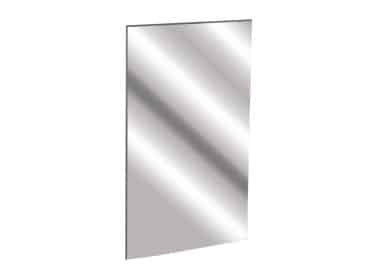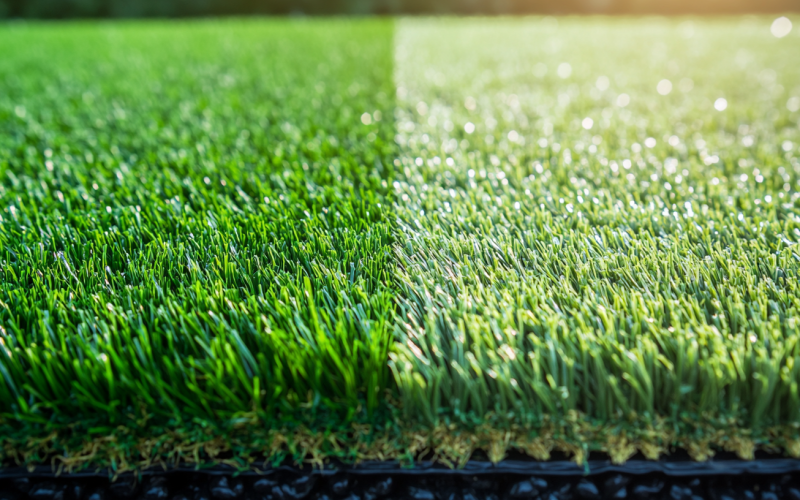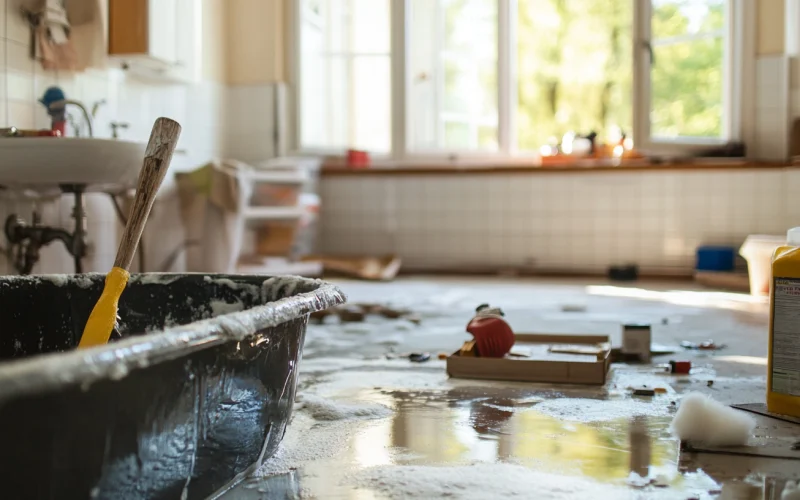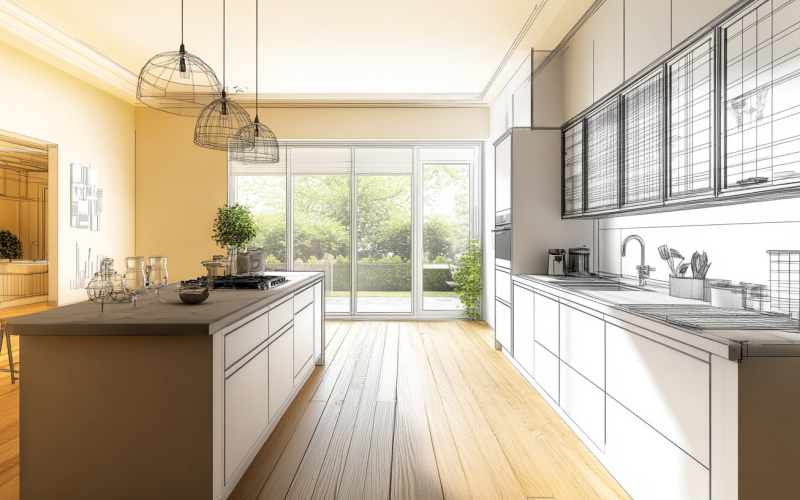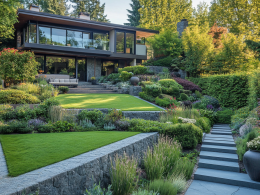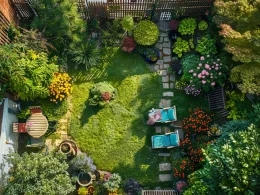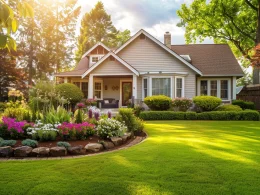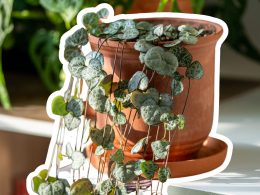The debate between artificial and natural grass often hinges on maintenance, cost, aesthetics, and environmental impact. Both options have their merits, but understanding the pros and cons of each is essential for making an informed decision.
This comprehensive guide breaks down the key differences, benefits, and challenges of artificial and natural grass, helping you choose the best option for your needs and lifestyle.
1.Maintenance
Maintaining a lush, green lawn is no easy task. While natural grass offers a natural look and feel, it demands consistent upkeep to stay healthy.
Natural Grass requires a lot of attention. It needs regular mowing, watering, fertilizing, aerating, and weeding to maintain its health. Lawn care products such as fertilizers and herbicides are commonly used to prevent weeds and pests. Additionally, natural lawns need time to recover from heavy use, especially after games, events, or periods of intense foot traffic.
In contrast, artificial grass from Tazscapes requires minimal maintenance. Once installed, you won’t need to mow, water, or fertilize it. The occasional rinse and brush to clear off debris or dirt are usually sufficient to keep it looking fresh. This turf stays green year-round, providing a uniform appearance without the hassle of traditional lawn care.
2. Cost Comparison: Initial vs. Long-Term Expenses
Artificial Grass comes with a higher upfront cost, but its longevity often makes it more economical in the long run. The installation process is labour-intensive and involves the preparation of the ground, laying a base, and securing the turf.
However, artificial grass has little to no ongoing costs after the initial installation. You’ll save on water, lawn care equipment, and professional services, making it a cost-effective choice over time.
Natural Grass is more affordable at the outset. The cost of seeds or sod is significantly lower, but maintenance expenses quickly add up. Maintaining a natural lawn involves ongoing costs, from water bills to fertilizers and seasonal treatments. Over time, these expenses can far exceed the initial savings.
3. Environmental Impact: Synthetic vs. Natural Turf
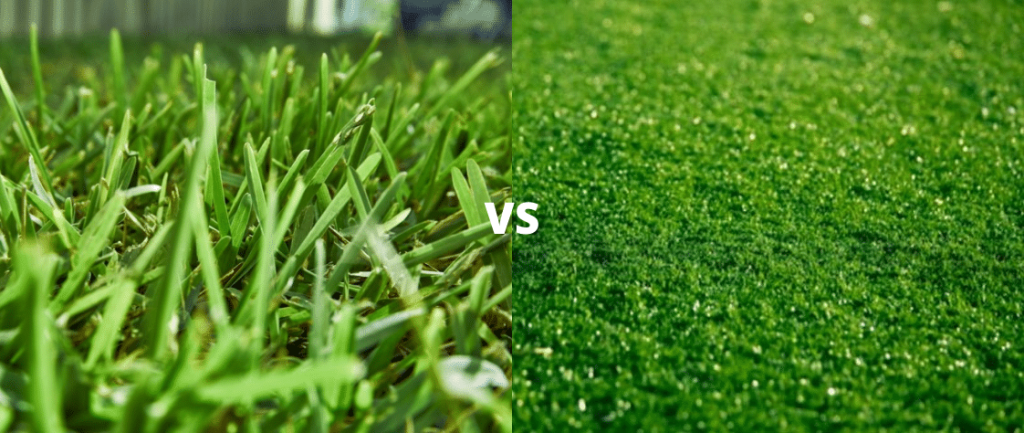
Artificial Grass is made from synthetic materials like polyethylene and nylon. Although it reduces water usage, its production and disposal can negatively impact the environment.
The manufacturing process uses non-renewable resources and releases pollutants. Moreover, artificial turf is not biodegradable, contributing to landfill waste once it reaches the end of its life cycle. Some brands offer recyclable options but may come at a higher price point.
Natural Grass, on the contrary, offers ecological benefits that artificial turf cannot. A living lawn acts as a carbon sink, absorbing carbon dioxide and releasing oxygen.
Grass cools the surrounding environment through transpiration, helping to reduce the urban heat island effect. It also promotes biodiversity, providing a habitat for insects and small wildlife. However, maintaining natural grass can require large amounts of water and chemical treatments, which have environmental downsides.
4. Aesthetic Appeal: Which Looks Better?
Artificial grass has evolved to mimic the appearance of natural grass closely. Modern turf comes in shades of green, blade lengths, and textures to achieve a realistic look. It can be difficult to tell the difference between artificial and real grass from a distance. The advantage of synthetic turf is its consistent, manicured appearance throughout the year, regardless of weather conditions.
Natural Grass offers a unique, organic beauty that artificial turf struggles to replicate. The texture and aroma of freshly cut grass, the natural colour variations, and the soft feel underfoot are all aspects that contribute to its appeal. However, natural grass can turn brown or patchy during dry seasons or with heavy use, diminishing its aesthetic charm.
5. Longevity: How Long Do They Last?
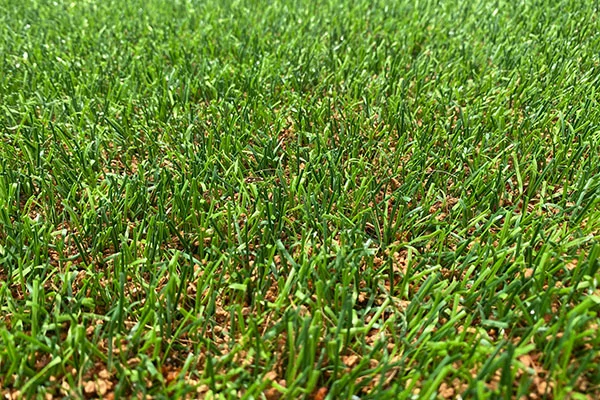
Artificial Grass is designed to withstand heavy foot traffic and harsh weather conditions. High-quality artificial turf can last up to 15-20 years with minimal maintenance. It makes it a popular choice for playgrounds, sports fields, and residential yards where durability is crucial. Its resistance to wear and tear makes it ideal for homeowners who want a long-lasting solution without frequent repairs.
Natural Grass has a shorter lifespan, especially in high-traffic areas. Lawns can become worn down over time, requiring reseeding or patching. Heavy foot traffic, pet activity, and weather conditions like droughts or floods can all take a toll on the health and longevity of a natural lawn. However, a well-maintained lawn can thrive for many years with proper care.
6. Seasonal Performance
Artificial Grass maintains its appearance throughout all seasons. Whether scorching hot in summer or cold in winter, synthetic turf doesn’t change colour, die, or become dormant. It’s particularly beneficial for regions with harsh winters, where natural grass would typically brown and lose its lustre.
Natural Grass is subject to seasonal fluctuations. Natural grass thrives during the spring and summer, with ample water and sunlight. However, in winter, most grass varieties go dormant, turning brown or yellow until warmer temperatures return. Seasonal tasks such as overseeding or winterization may be necessary to prepare the lawn for different climates.
7. Pet-Friendliness
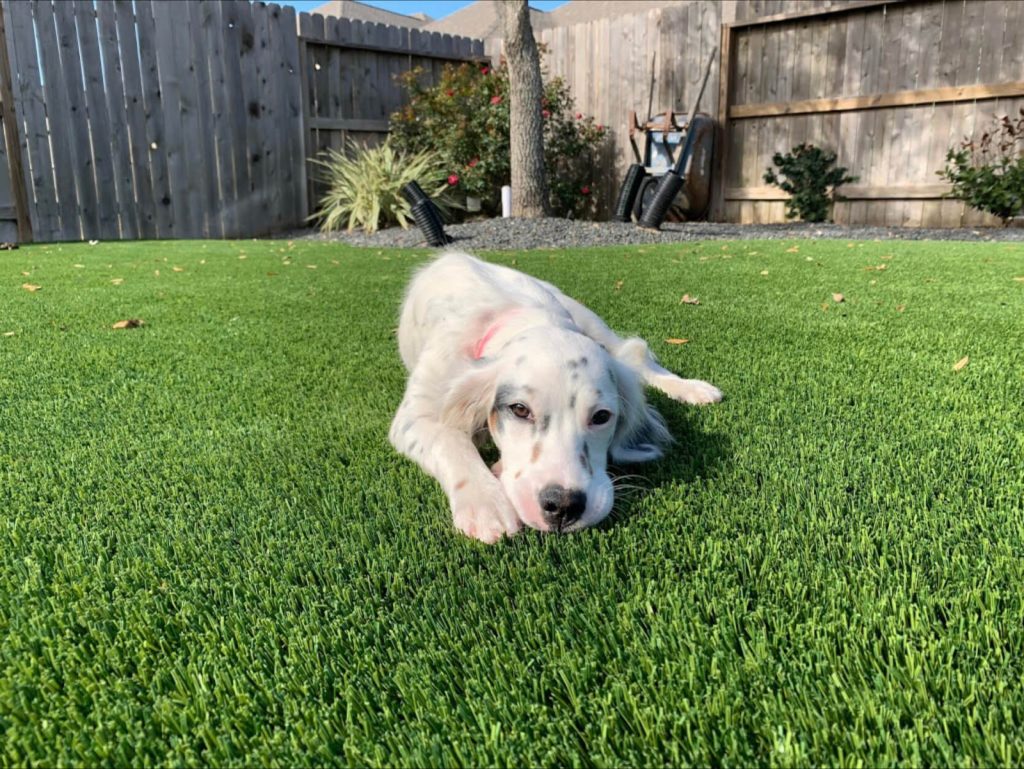
Artificial Grass is increasingly popular among pet owners. It’s easy to clean, doesn’t form muddy patches, and is durable enough to withstand energetic pets. Pet waste can easily be rinsed away, and some types of artificial grass are designed with antimicrobial properties to prevent odours. However, it’s important to ensure good drainage to avoid issues with urine buildup.
Natural Grass can be more challenging for pet owners. Dog urine can cause yellow spots, and digging or running can create uneven patches and mud. Additionally, fleas, ticks, and other pests often thrive in natural grass, posing potential health risks for your pets.
To mitigate these issues, pet-friendly lawn care products can help keep your natural grass healthier and more resilient.
8. Water Conservation
Artificial Grass is a water-efficient choice. Once installed, it doesn’t require watering, making it ideal for regions facing water shortages or drought conditions. The only artificial turf water may need a quick rinse to remove dust, pet waste, or debris, reducing the environmental impact compared to natural lawns.
Natural Grass demands significant water usage, particularly in dry climates. Maintaining a green, healthy lawn requires daily or weekly watering, especially during summer. The water demand for natural grass can significantly strain local resources, especially in drought-prone areas.
9. Heat Retention: Does It Get Too Hot?
Artificial Grass has one downside when it comes to temperature. In direct sunlight, synthetic turf can become very hot, making it uncomfortable to walk barefoot and potentially unsafe for pets and children. Some newer products include cooling technology to reduce heat buildup, but this issue remains a drawback in hot climates.
Natural Grass has a natural cooling effect. Through transpiration, it releases moisture into the air, helping to lower temperatures in the surrounding environment. On hot days, a natural lawn stays significantly cooler than artificial grass, making it more comfortable for outdoor activities.
10. Installation Process: What’s Involved?
Artificial Grass Installation involves removing the existing surface, levelling the ground, and installing a weed barrier. A base material such as crushed stone or sand is spread to provide stability and drainage. The artificial grass is then rolled out and secured. While the process is labour-intensive and requires professional expertise, it results in an immediately usable lawn.
Natural Grass Installation can be done by either seeding or laying sod. Seeding is more affordable but requires time for the grass to grow and establish roots. Sod offers an instant lawn but is more expensive. Both methods require proper soil preparation, irrigation, and care during the early stages to ensure healthy growth.
Conclusion
Deciding between artificial grass and natural grass depends on various factors, including your budget, time for maintenance, environmental priorities, and aesthetic preferences.
- Choose artificial grass if you prioritize low maintenance, durability, water conservation, and year-round greenery.
- Opt for natural grass if you value a living lawn’s look, feel, and environmental benefits and are prepared to invest time and resources into its care.
Both options have unique advantages, so your final decision should align with your lifestyle and environmental conditions.
You can make an informed choice that suits your space and needs by considering key factors such as cost, maintenance, environmental impact, and seasonal performance. Whether you choose artificial turf’s low-maintenance convenience or real grass’s natural beauty, the right lawn can enhance your outdoor living experience.




